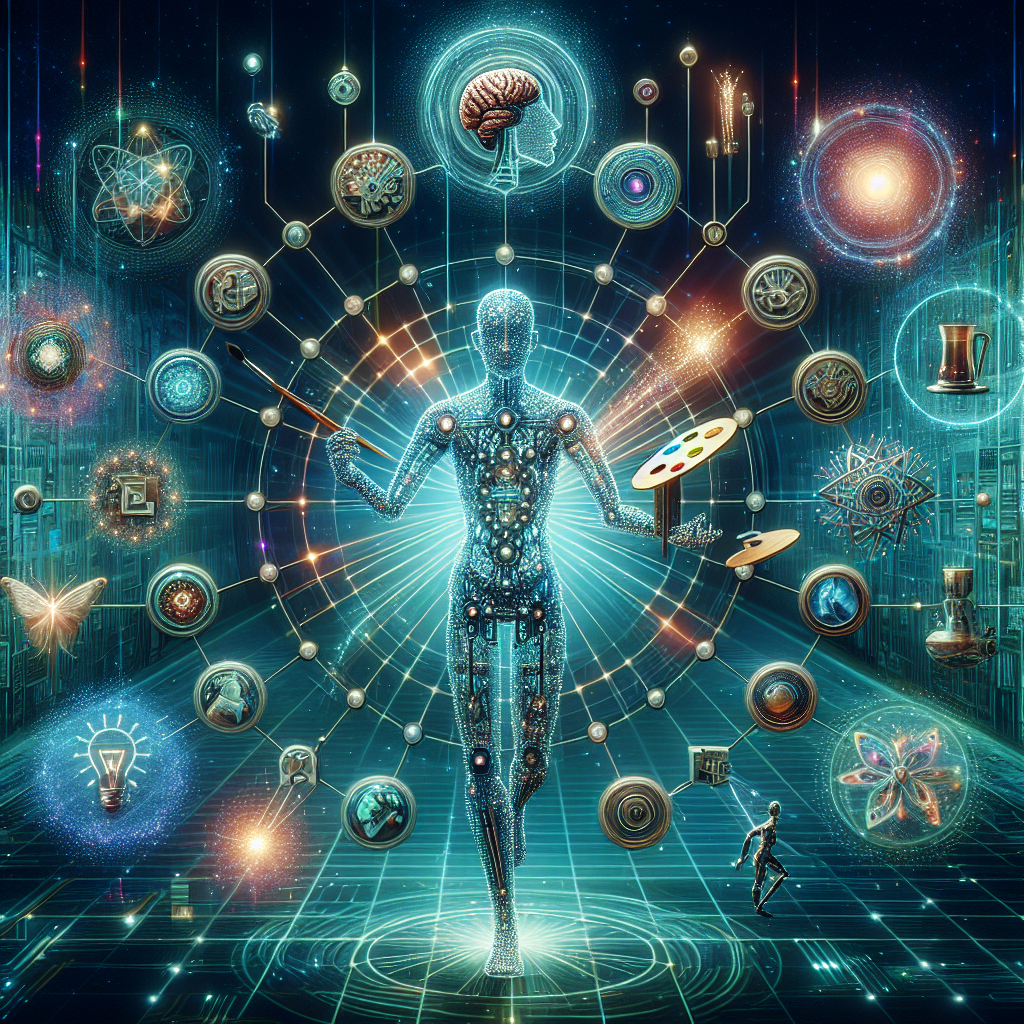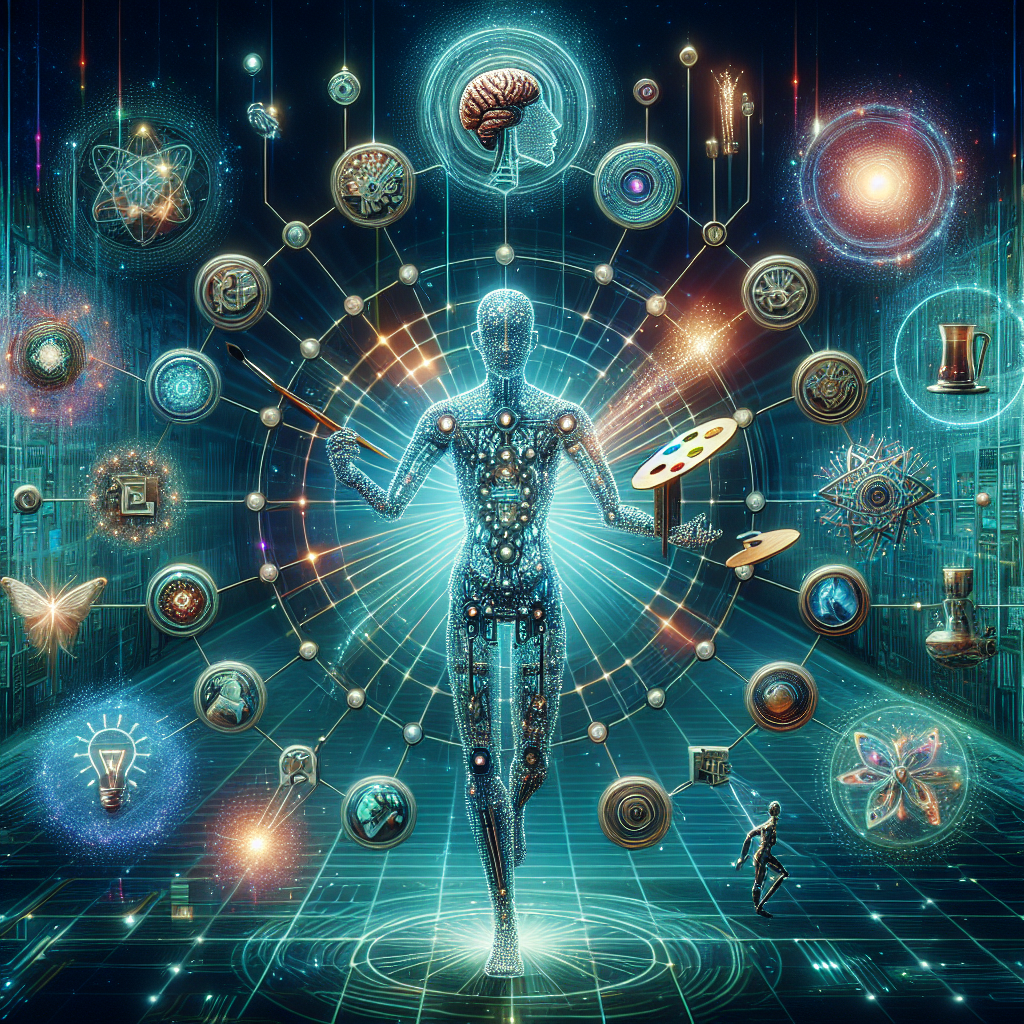AI, or artificial intelligence, has undoubtedly transformed our world in numerous ways, but can it truly be creative? This question has sparked endless debates among experts and enthusiasts alike. While some argue that creativity is an inherently human trait, others believe that advancements in AI technology have unlocked the potential for machines to exhibit creative behavior. Exploring the boundaries of AI and creativity, this article delves into the ongoing discussions surrounding this intriguing topic and unveils the fascinating possibilities that lie ahead.
Understanding AI
What is AI?
Artificial Intelligence (AI) is a field of computer science that focuses on creating intelligent machines capable of performing tasks that typically require human intelligence. These tasks include speech recognition, decision-making, problem-solving, and learning. AI systems can analyze vast amounts of data, identify patterns, and make predictions or recommendations based on this analysis.
Types of AI
There are two main types of AI: narrow AI and general AI. Narrow AI, also known as weak AI, is designed to perform specific tasks, such as playing chess, recommending movies, or recognizing images. General AI, on the other hand, refers to machines that possess the ability to understand, learn, and apply knowledge in a manner similar to human intelligence. While narrow AI is prevalent in various domains today, achieving general AI still remains a goal for future advancements.
Defining Creativity
Traditional view of creativity
Traditionally, creativity has been seen as a distinctively human trait, involving the ability to generate original and valuable ideas or solutions. It has been associated with imagination, innovation, and the expression of unique perspectives. Creativity allows humans to think outside the box, push boundaries, and come up with novel concepts or artworks that captivate and inspire others.
Creative processes
Creative processes involve a combination of divergent thinking, which involves generating multiple ideas and possibilities, and convergent thinking, which involves selecting and refining the best ideas. These processes often incorporate brainstorming, experimentation, and iteration to arrive at creative outcomes. They also rely on the individual’s knowledge, experiences, and insights to fuel the generation of new and innovative ideas.
Creativity as a human trait
Creativity is deeply rooted in human experiences, emotions, and cognitive abilities. It encompasses not only the ability to think creatively but also the capacity to experience and express emotions, perceive nuances, and understand cultural contexts. Human creativity often arises from personal experiences, cultural influences, and the depth of emotions felt by individuals. It is a multidimensional and dynamic aspect of human existence.

AI and Creativity
AI systems mimicking creativity
Advancements in AI have enabled systems to mimic certain aspects of creativity. Machine learning algorithms can analyze vast datasets, identify patterns, and generate outputs that resemble creative works. For example, AI algorithms can produce artworks, compose music, and even write poetry that, to some extent, imitate human creativity. However, it is important to note that these systems are replicating creativity based on existing data rather than having a true understanding or genuine experience.
AI-generated art
AI-powered systems have been used to generate art that is visually impressive and conceptually interesting. These systems learn from large collections of existing artworks and then use this knowledge to create new pieces. AI-generated art can encompass various forms, such as paintings, sculptures, and digital graphics. While some argue that this type of art lacks the depth and emotional connection of human-created art, others appreciate the uniqueness and innovation that AI brings to the field.
AI in music composition
AI has also made significant strides in the realm of music composition. Machine learning algorithms can analyze vast collections of musical compositions, identify patterns, and generate new pieces based on these patterns. AI systems can produce melodies, harmonies, and even entire compositions that resemble the styles of different composers or genres. While AI-generated music may not possess the same emotional depth as music created by humans, it has the potential to inspire new musical directions and experimentation.
AI in writing
AI has begun to play a role in various aspects of writing. Language models trained using deep learning techniques can generate coherent and contextually relevant text in a manner that resembles human writing. AI can aid in tasks like automated content generation, language translation, and even writing assistance by offering suggestions and enhancing grammar and style. However, AI-generated writing still lacks the fluency and creativity that comes naturally to human authors.
Limitations of AI in Creativity
Lack of human experience
One of the primary limitations of AI in creativity is its lack of human experience. AI systems, despite their ability to process massive amounts of data, lack the lived experiences and personal insights that humans bring to the creative process. Human experiences, emotions, and cultural backgrounds play a significant role in shaping artistic expression and innovative ideas, making it challenging for AI to truly replicate this aspect of creativity.
Emotional depth and inspiration
Emotional depth and inspiration are crucial components of human creativity. The ability to tap into emotions, convey powerful messages, and connect with an audience on a deep level is a defining characteristic of human artistry. AI, with its algorithmic nature, struggles to grasp and evoke the same range and intensity of emotions that human creators can achieve. While AI-generated works might possess technical skill, they often lack the emotional impact and soul that human-created art can convey.
Understanding cultural nuances
Cultural nuances heavily influence creative expression, as different cultures have unique perspectives, symbolism, and aesthetics. AI systems, relying solely on existing data, struggle to comprehend and incorporate cultural nuances effectively. This limitation can lead to the production of art or content that lacks cultural sensitivity or fails to resonate with specific audiences. Understanding cultural context requires a deep understanding of human experiences and is an area where AI currently falls short.

AI Enhancing Human Creativity
AI as a creative tool
While there are limitations to AI in creativity, it can still serve as a valuable tool for human creatives. AI systems can help artists and designers explore new ideas, visualize concepts, and generate alternative solutions. By automating certain repetitive tasks or offering suggestions, AI frees up time for artists to focus on more critical aspects of the creative process. It acts as a collaborator, augmenting human creativity rather than replacing it.
Collaborative creativity
AI has the potential to facilitate collaborative creativity by bringing together humans and machines. Humans can provide the valuable insights, experiences, and emotional depth that AI lacks, while AI can offer data-driven analysis, generate possibilities, and even suggest novel approaches. This collaboration can lead to innovative ideas and solutions that blend the best of human creativity and AI processing power.
AI-powered creative assistance
AI-powered creative assistance tools are becoming increasingly popular in various creative fields. From design software that suggests color schemes to writing assistants that identify grammatical errors and offer stylistic suggestions, AI can enhance the quality and efficiency of creative work. These tools complement human capabilities, providing real-time feedback, and expanding the potential for creative expression.
The Future of AI and Creativity
Developments in AI for creativity
The future holds immense potential for AI in creativity. Researchers and technologists are continuously developing new techniques and algorithms to enable AI systems to understand creative tasks, generate more intricate artwork, compose nuanced music, and even write engaging stories. As AI evolves, it is likely to be integrated further into creative processes, offering novel tools and approaches for artists, designers, writers, and musicians.
Ethical considerations
As AI advances in the realm of creativity, ethical considerations come to the forefront. Questions surrounding authorship, originality, and the role of human creators arise. It is essential to ensure that proper credit is given to human creators when AI is involved and that AI-generated work does not infringe upon copyright laws or pass off as the work of human creators. Additionally, ethical considerations also include issues like bias in training data and cultural appropriation.
Impact on creative industries
The integration of AI into creative industries will undoubtedly have a significant impact. While there may be concerns about job displacement, AI can also create new opportunities and alter workflows. Artists, designers, writers, and musicians can harness AI tools to expand their creative possibilities, reach new audiences, and streamline their processes. The creative industries will need to adapt and embrace AI technology to leverage its potential for growth and innovation.
In conclusion, AI has made remarkable strides in mimicking certain aspects of creativity, such as generating artworks, composing music, and even producing written content. However, it still falls short in terms of embodying true human creativity, as it lacks human experiences, emotions, and a deep understanding of cultural nuances. Nevertheless, AI can serve as a valuable creative tool, enhancing human creativity and facilitating collaborative processes. With further developments and careful ethical considerations, the future holds great potential for the integration of AI into creative industries, pushing boundaries and unlocking new possibilities for artistic expression.
